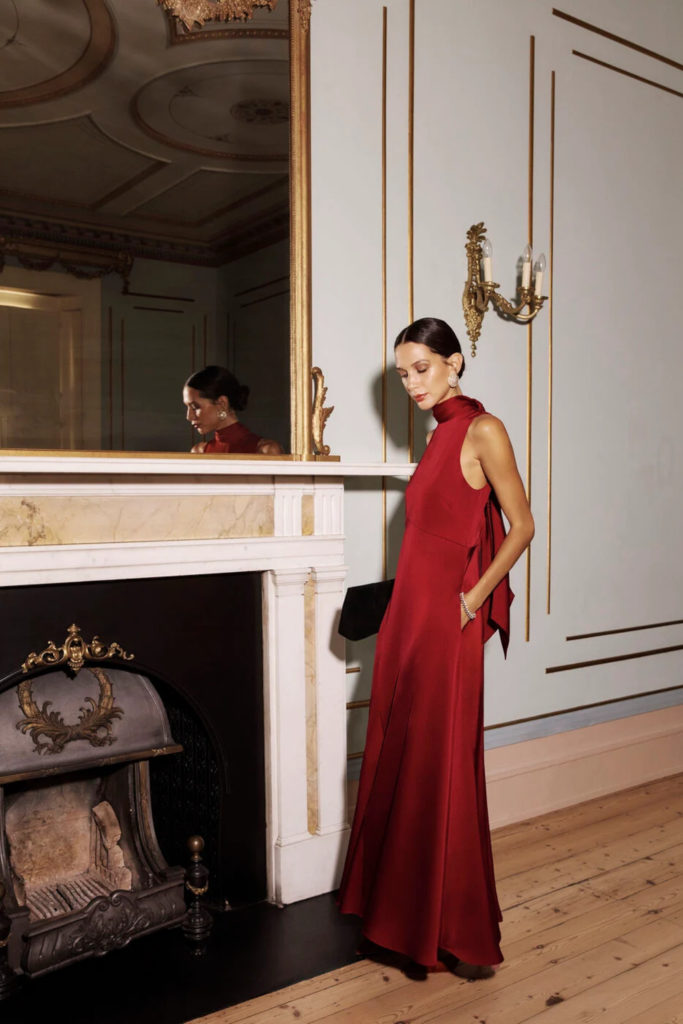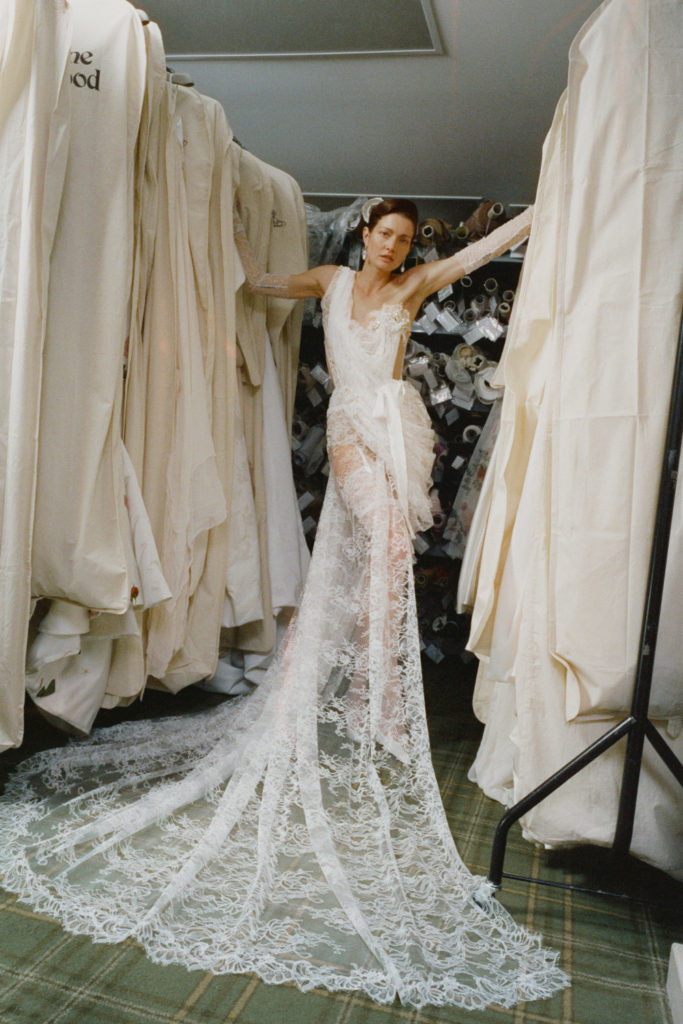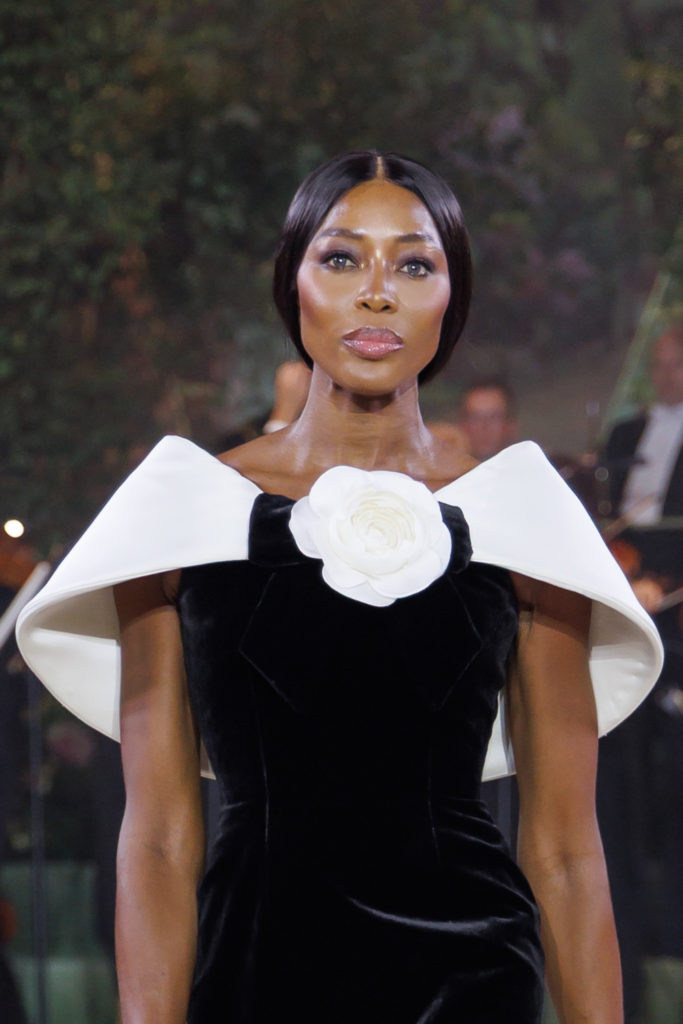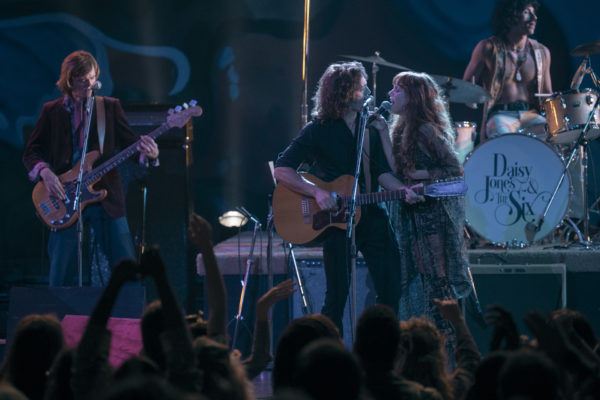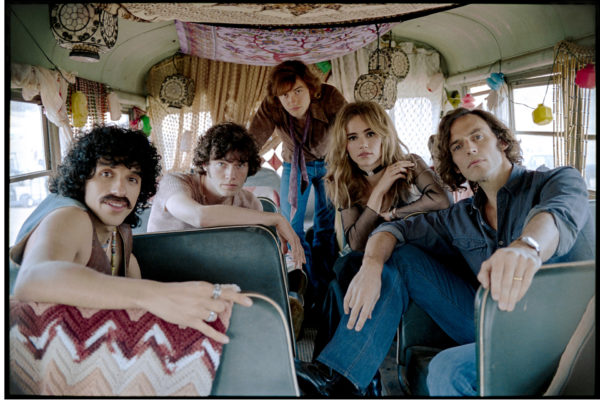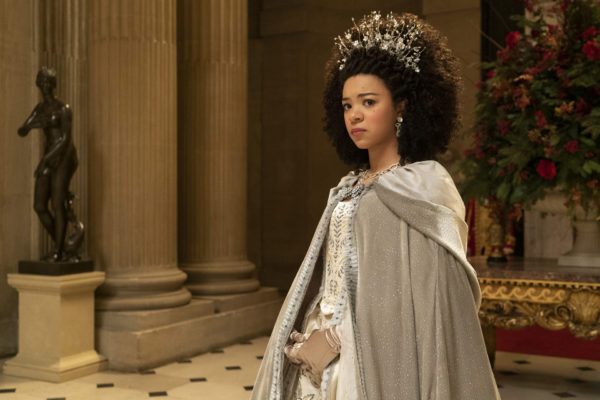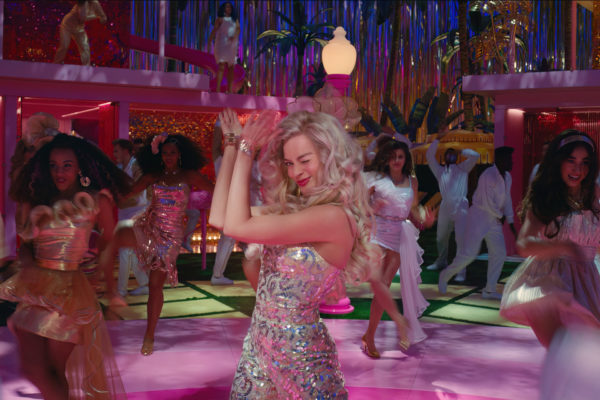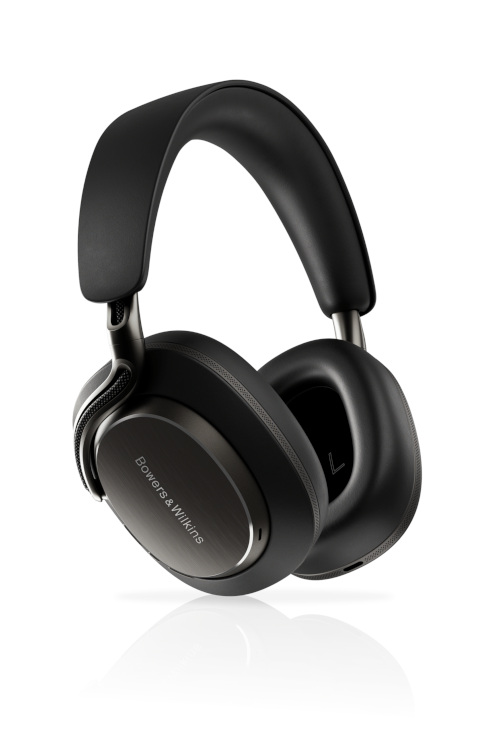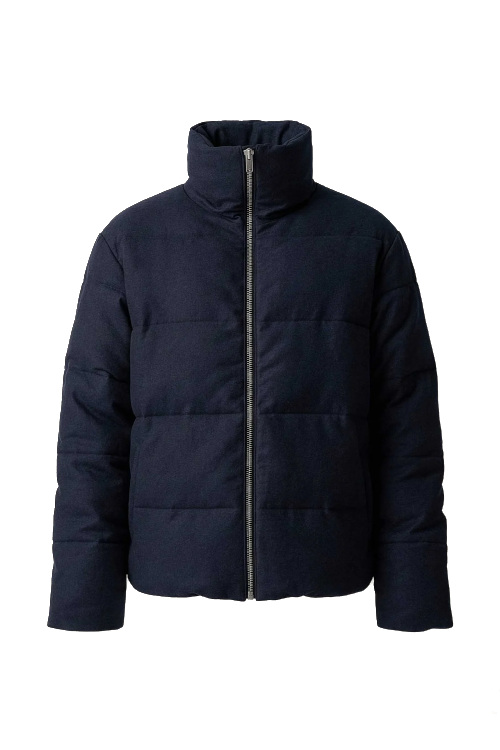‘I like digging deep and uncovering things’: Denise Wingate On Creating The Iconic Wardrobe For Daisy Jones & The Six
By
3 years ago
Find out how the costume designer helped bring to life the characters from the show

For many of us watching Amazon’s new smash-hit series Daisy Jones & The Six, we’re experiencing anemoia; a sense of nostalgia for a moment in time we never lived through. The series seamlessly transports its audience back to the rock ‘n’ roll days of the 1970s through a carefully crafted combination of set design, costume and decade-defining anthems, with a killer cast of actors recreating the attitudes of the era. But it’s the rockstar outfits worn by fictional band Daisy Jones & The Six that have caught our attention, and we’re dying to know just how these characters were brought so vividly to life. We sit down with costume designer Denise Wingate, whose previous projects include recent classics like Cruel Intentions, A Cinderella Story and Wedding Crashers, to find out just how she captured that electric 70s energy.
Denise Wingate On Creating The Iconic Wardrobe For Daisy Jones & The Six
What was it like working on Daisy Jones & The Six?
I’ve been doing this for 35 years. But with this particular crew, our cinematographer Checco [Varese] and our production designer Jessica [Kender], we worked so well together. We had similar palettes, the same sensibilities – and we just had the time to make sure that we were all doing the same thing. They would show me pictures of all the locations and the furniture, and I would check all the clothes with them. It doesn’t happen like that all the time. It was a pretty special experience, I have to say.
I heard it was a very collaborative effort, with lots of the actors getting involved and you all sending each other ideas.
Yeah, I think this was made possible because we had the time – because of COVID. We had the time to actually get to know each other better and get to know personalities, and they had time to figure out in ‘band camp’ what their persona was and who the characters were. That was really special. I think that’s why it looks as good as it does. And, you know, we just worked so closely with the directors and the producers. It was like a big family. And like I said, it’s rare. Usually, I get an actor two days before they work and you just have to hope whatever you pulled is what they want to do.
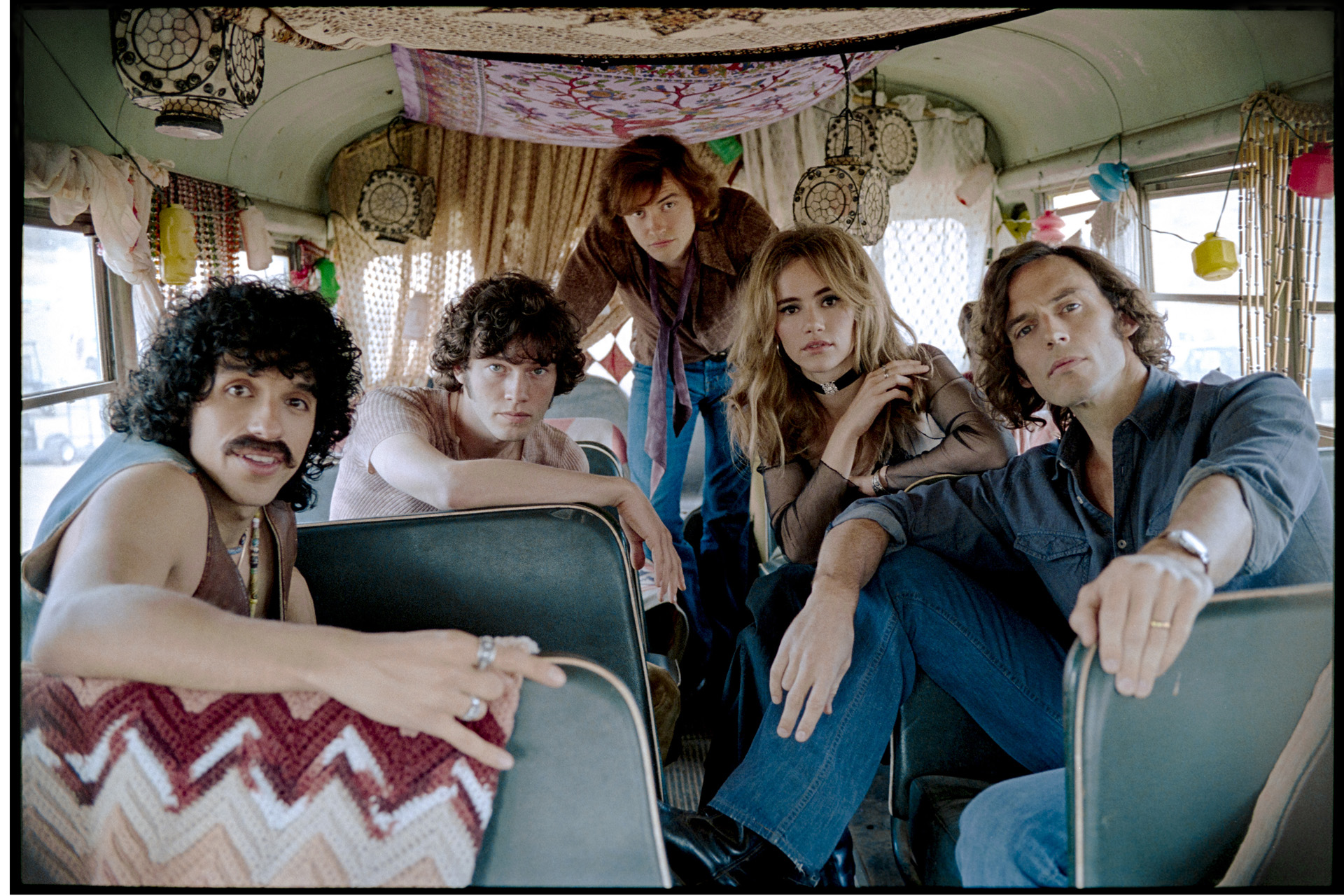
L to R: Sebastian Chacon at Warren Rojas, Will Harrison as Graham Dunne, Josh Whitehouse as Eddie Roundtree, Suki Waterhouse as Karen Sirko and Sam Claflin as Billy Dunne
So, the series is based on a book that’s very heavy on dialogue. How did you find the adaptation process? Did you feel any pressure to stick to the source materials or did you largely put your own spin on it?
I loved the book so much, and I thought Taylor had such a clear vision; I wanted to respect that vision to a certain degree. I mean, there were some things we changed a bit, but there were certain descriptions in the book that were very specific. It wouldn’t have been fair to the fans – I know as having read the book, I would be expecting it. So, there were certain descriptions I felt like we had to stay true to, but at the same time, I think Riley [Keough] wanted to make Daisy her own character. We tried to figure out what that was, using the book as a jumping off point.
Daisy Jones & The Six is a series that takes place over a big sweep of time. What kind of styling choices did you make when it came to showing the band getting older, and then 20 years later?
I think it was difficult because the actors were playing themselves, so it’s like ‘how do you create that arc and make it believable’. I think hair and makeup had a more difficult job than I did, I just tried to figure out where they would be in the 90s and pitch those ideas. I was mainly trying to figure out where all of these people would be in their lives, but because there’s so much dialogue from the documentary footage I didn’t want it to be distracting. I didn’t want any crazy, wild prints or anything. Especially with Daisy, I wanted to leave her a little more as a blank canvas so we’re not really sure where she’s at in her life or what she’s doing. It was also to let the words speak and not the clothes.
I didn’t want anyone to be taken out of the story, either, so I tried to make the clothes as realistic and as believable as possible. Nothing crazy – except for Warren, he’s the crazy one. It was probably like seeing Jimmy Buffett, you know? He’s drinking beer on a boat, he’s rich, he doesn’t care!
We’re obsessed with Warren at C&TH.
Warren is my spirit animal!
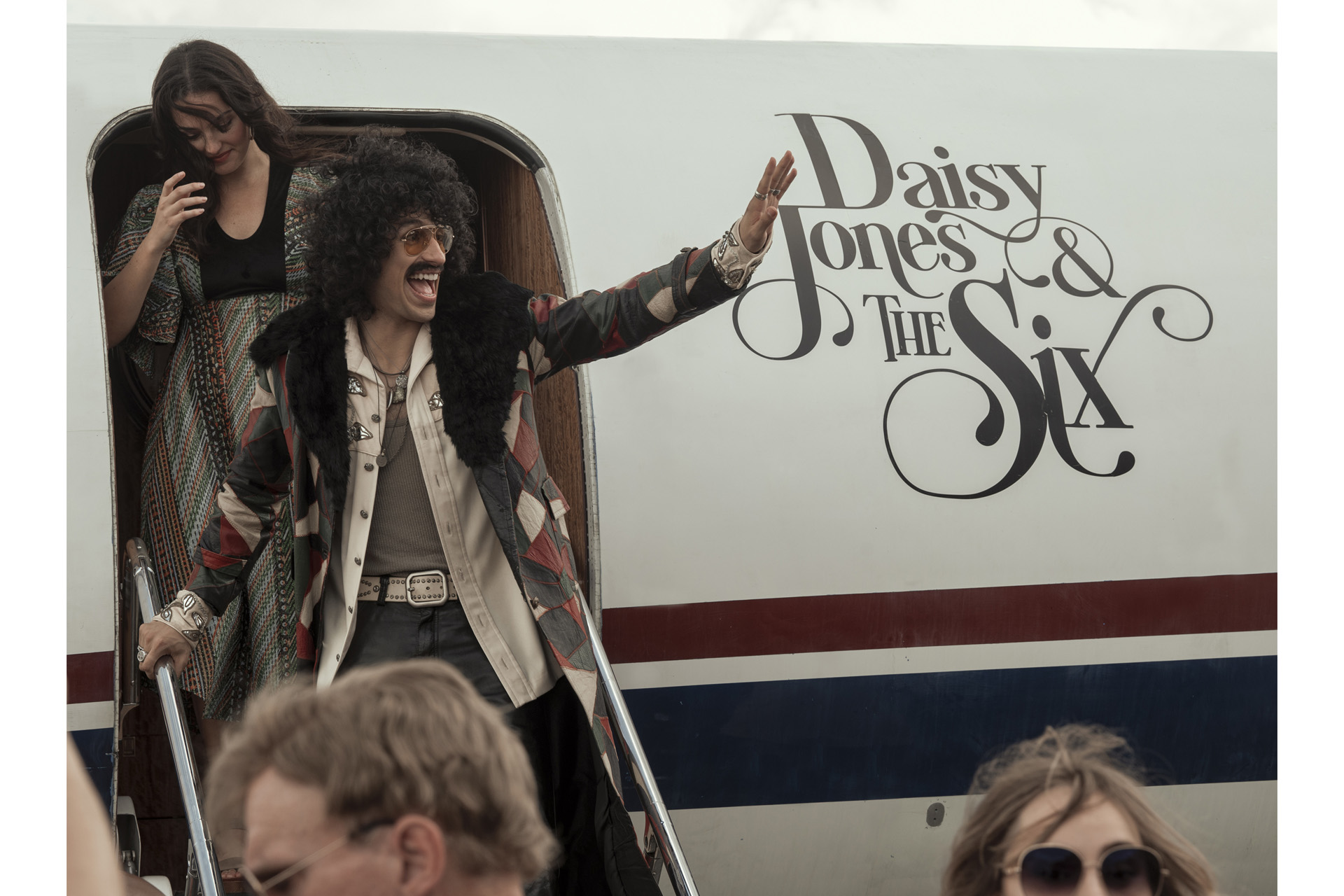
Sebastian Chacon at Warren Rojas
I loved that little detail in the series, when the band are asked what they did with their first rockstar pay cheque, and Warren says he was eyeing up a vintage fur vest – then we see him wearing one not too long after.
And that was in the book, I was like, ‘We gotta do it!’ That was a really good vintage fur vest, too – so over the top! It made sense though, with him always wearing his fur coats and crazy vests. That was Sebastian [Chacon]. The wilder the better. He was great, a total peacock. Every time he came on set everyone would come out to see what he was wearing. Everyone would be shaking their heads.
Let’s talk styling notes and inspirations. What was the process for creating the wardrobe for frontwoman Daisy?
Well, again, we had to start with her younger self; young Daisy just moving out from her parents and just getting into the whole Sunset Strip scene. Luckily there are a lot of images online and books and there were a lot of rock photographers back in the day. A guy named Henry Dietz did a lot of Laurel Canyon photographs, which were a great reference point. There was also a lot of going back to young Linda Ronstadt, Joni Mitchell – these young women that were just trying to make it on their own. I did a lot of research like that. Especially young Linda Ronstadt. She looked really young; she was really young. She had the short shorts, the cowboy boots, the halter tops and the big gold hoops. I really loved her image and her songs back then. I thought it was really fitting.
Daisy then morphs as she becomes successful. Obviously, there’s Stevie Nicks. She was a big influence, for sure. Besides the fact that Taylor was influenced by Fleetwood Mac and listened to the band when she wrote the book, Fleetwood Mac was just so cool. They were huge. And Stevie Nicks had great style. We obviously didn’t rip her off completely, just used her as an influence. I had a lot of different images, different influences from different people. I had boards and boards and boards of ideas everywhere. My whole office was just floor to ceiling boards of images.
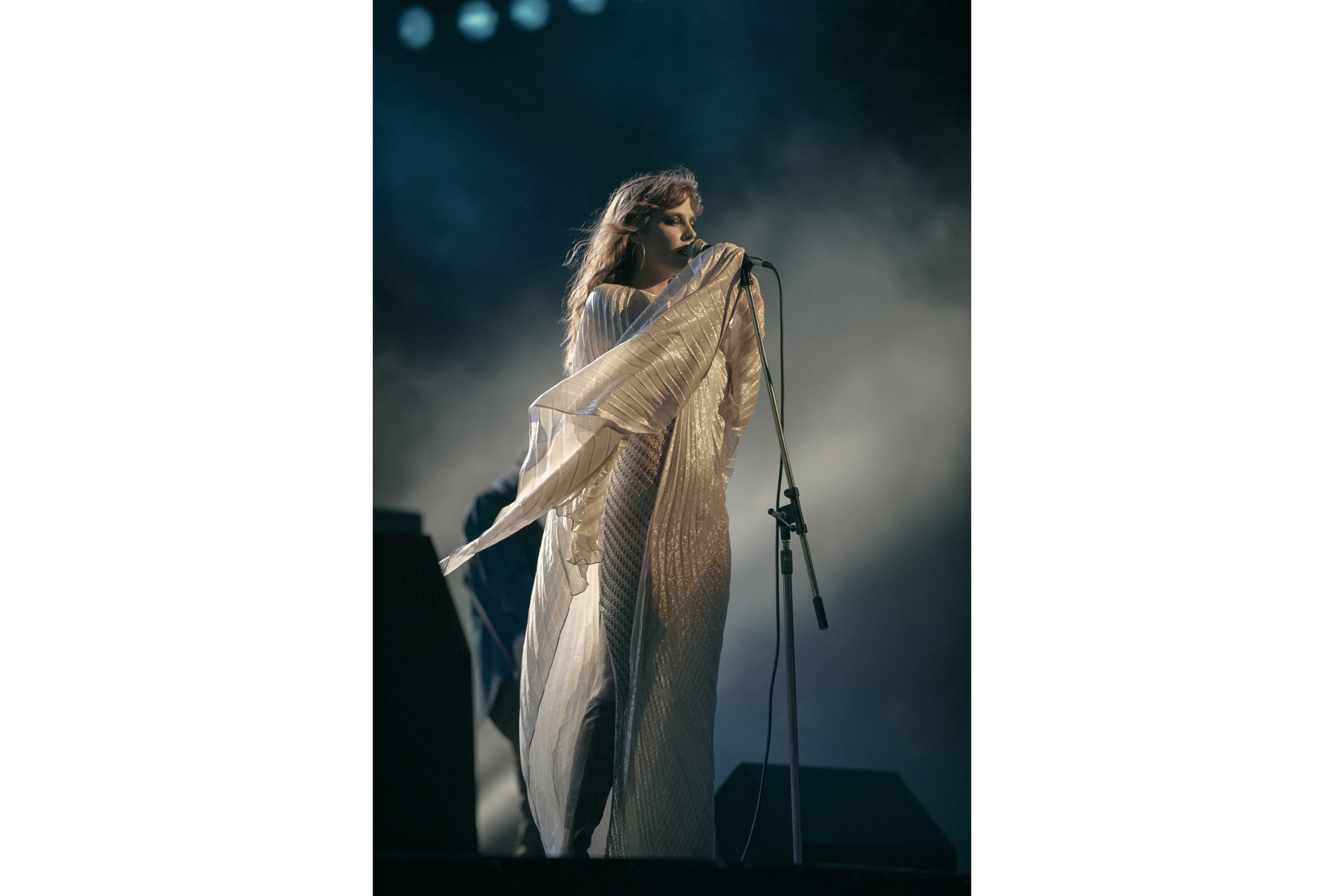
Riley Keough as Daisy Jones
One of the key costume moments for Daisy is this golden cape she wears for the band’s final performance. How did that come about?
Every time Riley and I would have a fitting she would ask: ‘What am I wearing for the final concert?’ and we kept talking about it, but we couldn’t put our finger on it. She called me one day and said, ‘I’m listening to Gold Dust Woman by Fleetwood Mac on the radio, and I think we should do a version of it with the costume. Let’s do something gold.’ I thought that was a great idea.
I have this amazing seamstress named Rosa Medina, who has been making stuff for me forever. She made some things and we’re like, ‘Yeah, this is great, but maybe for another show.’ It just wasn’t perfect. And then it was actually Rosa who found this Halston caftan. She sent it to me online was like, ‘Oh my god, this is great. This is what you should do.’ And so, we bought it.
It was originally a dress, but in the fitting Riley said we had to cut it and make it into a cape – and I was like ‘oh god’. But it ended up being perfect. We ended up finding this gold crocheted dress from the 30s, and it just worked perfectly. It was one of those costumes. It was the perfect ending for the show. And it looked perfect, and it photographed and moved perfectly. And again, that just doesn’t happen all the time. We had over 1000 changes for the whole series, and I’m sure when I look back there’s going to be moments where I think I could have done something differently. This is not one of those outfits; it’s like the perfect outfit.
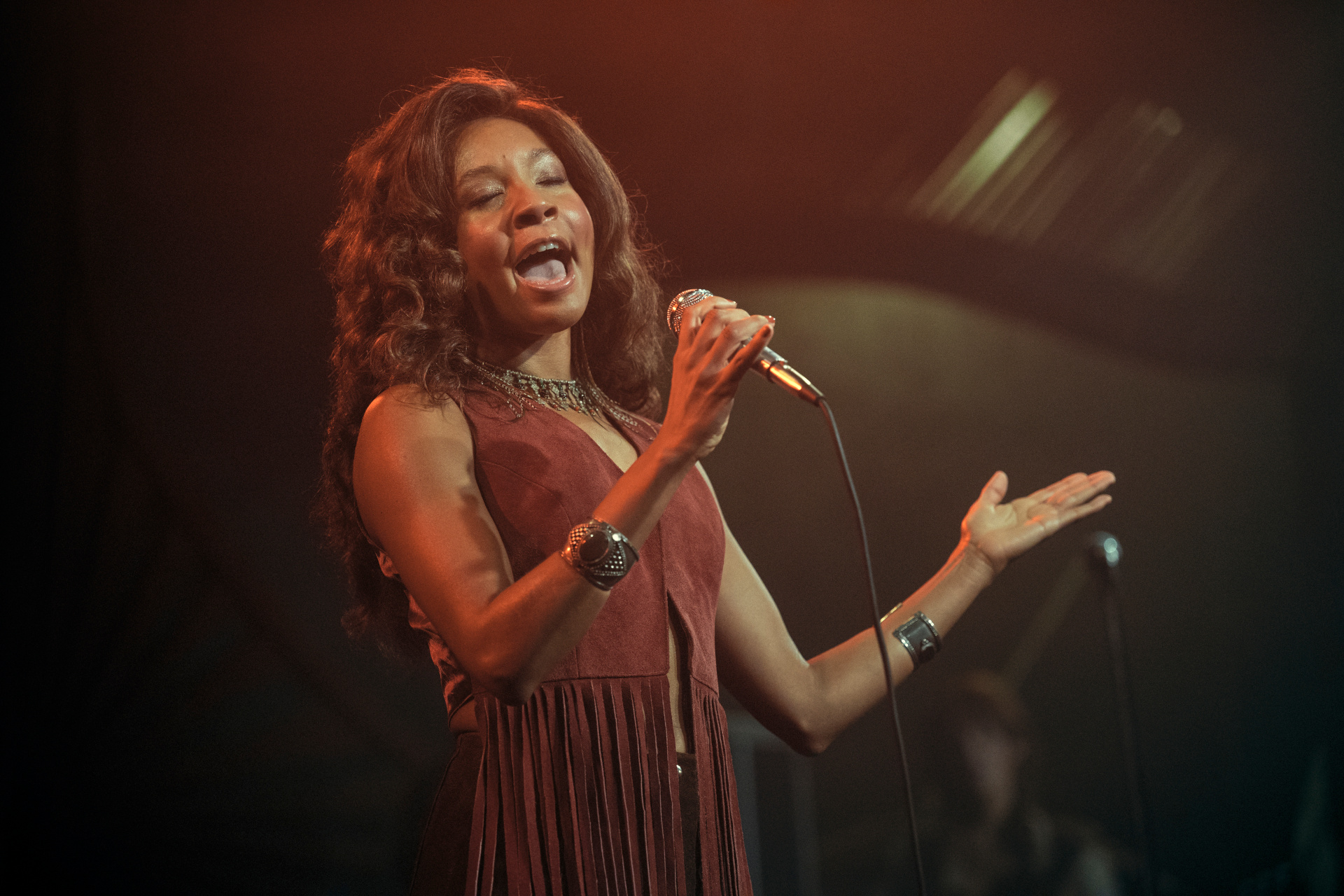
Nabiyah Be as Simone Jackson
And then we have our disco queen, Simone. Her story is a lot more fleshed out in the series than the book. Did this give you a bit more freedom when it came to creating her wardrobe?
It did, and Nabiyah [Be] had really good ideas too. She was really specific. She was another one that had a really clear vision of where she wanted her character to be – more than some of the other characters, actually. She was really focused on how she wanted to be, what she wanted to be portrayed as, how she wanted to be perceived and how she wanted her art to go.
We used a lot of backup singers from the era as our starting point, like Mary Clayton, Betty Davies, and then we morphed into more of a Chaka Khan, Donna Summers, Gloria Gaynor thing with the disco. Interestingly though, with all the research I did and what I could find from back in the day, I couldn’t find a lot of underground gay clubs. Back then nobody talked about it. So there weren’t a lot of photographs and I couldn’t do a lot of research. I had so much research for everything else. But it was interesting just to read about it and realise how taboo it was. These clubs were like their church, you know, this is where they belonged. I just wish there would be more photographs. But Naibyah was terrific; she looked great.
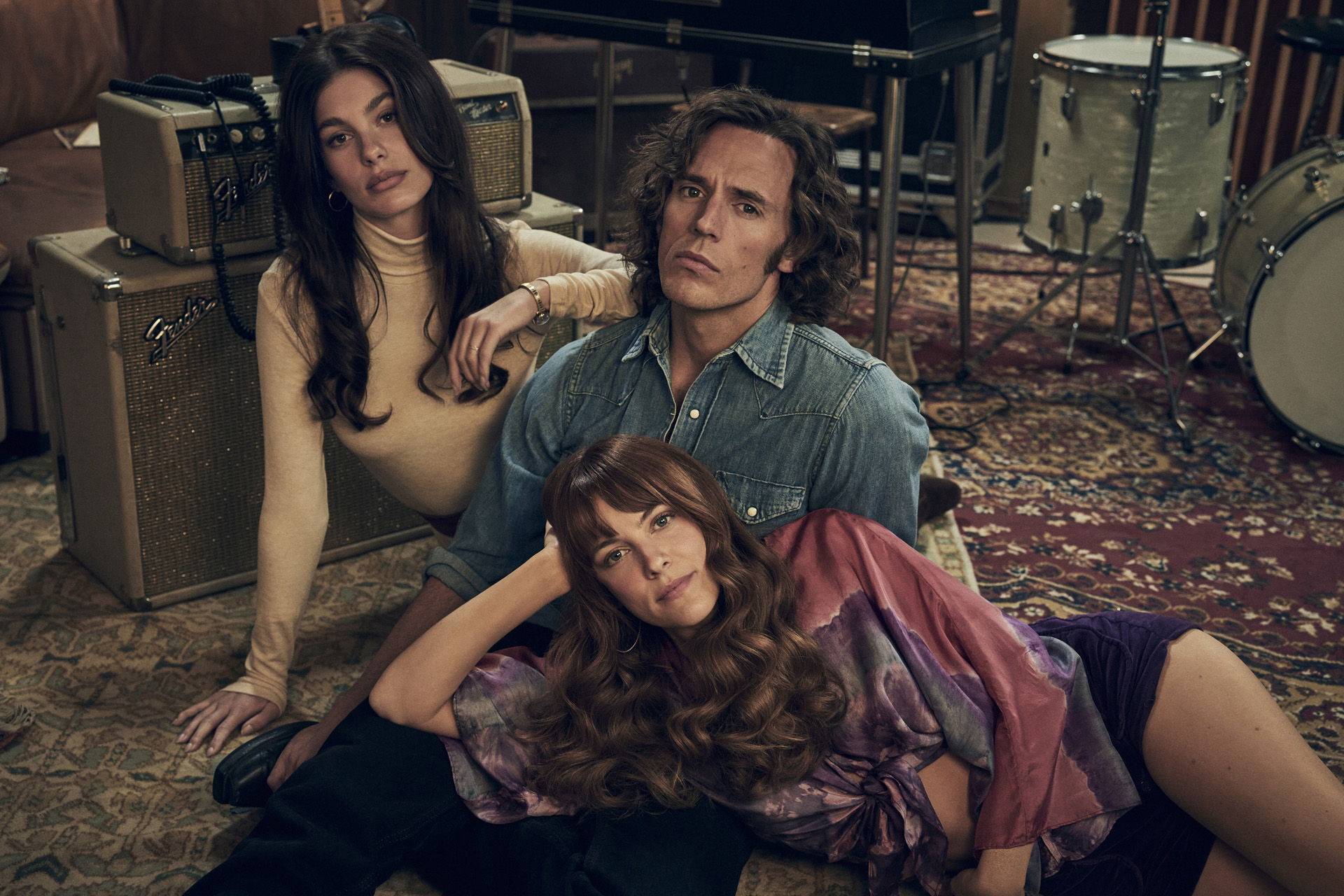
L to R: Camila Morrone as Camila Dunne, Sam Claflin as Billy Dunne and Riley Keough as Daisy Jones
And what about Camila, our ‘matriarch’ of the series?
I think Camilla had the biggest arc. We had to start by making her look really young, like somebody living with her parents. We started out a little Ali McGraw and Love Story. And then when she moved to Laurel Canyon, she becomes a little bit more boho and more flowing dresses. She wasn’t a hippie, just a little more free loving. She morphs into more of a Bianca Jagger type of rockstar wife at the end, a little more glamorous, more stylish. She was a lot of fun to create, and you could really see that arc with her as she grows from a young girl to a rockstar wife.
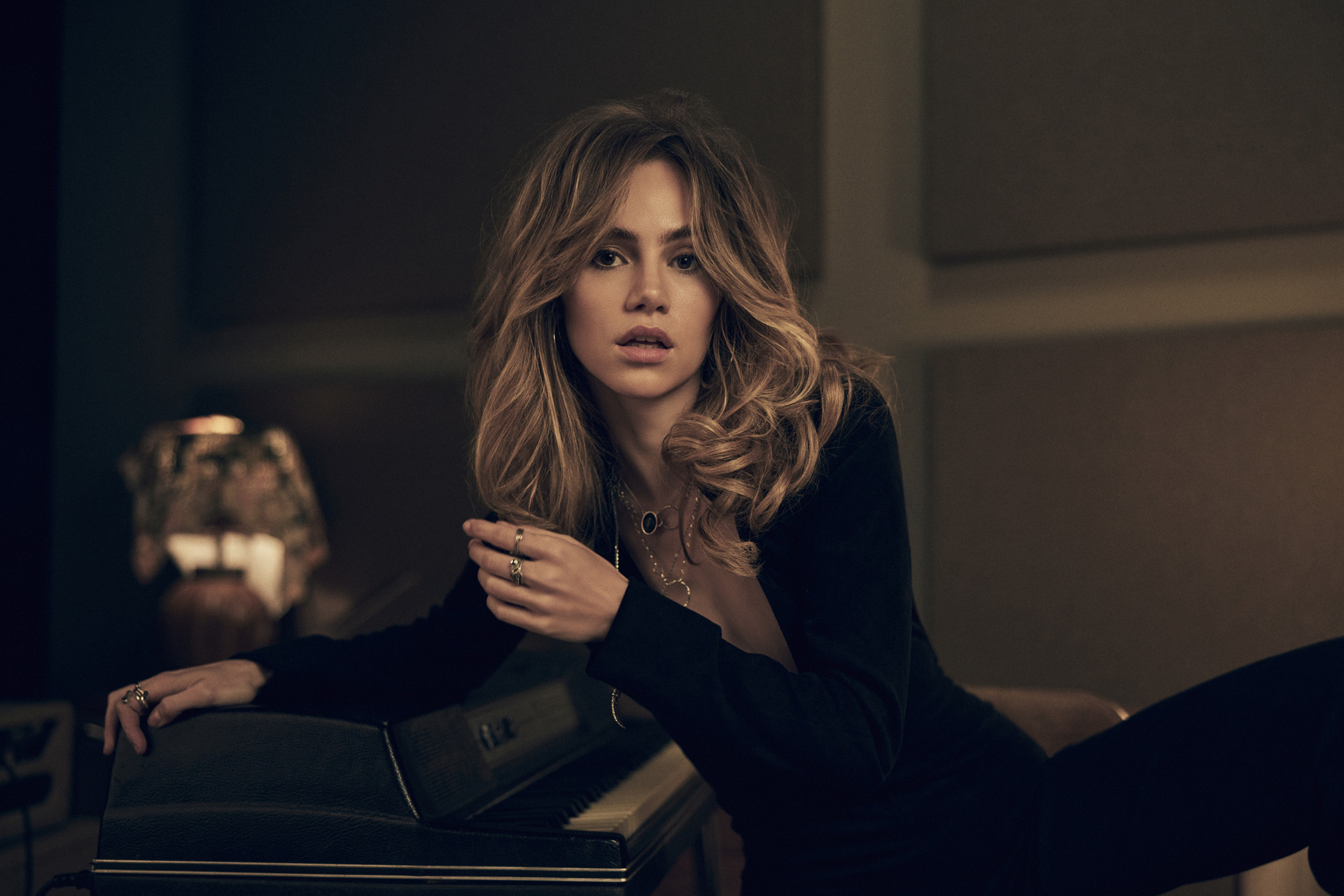
Suki Waterhouse as Karen Sirko
Karen is quite a contrast in terms of her styling. She seems much more glam than Daisy’s free-spirited rock?
Karen was a little bit androgynous, because she was really trying to pave her way and be taken seriously as a musician in an industry that was very male dominated. We did a little bit of Joan Jett, Suzi Quatro, Patti Smith, Chrissie Hynde, Debbie Harry – all of these really great female musicians, we wanted to go a little edgier. We did go a little more glam and looked at T. Rex and Fanny. But again, it was so much fun researching and just looking at all these different bands – even the more unknown bands. It was really, really fun. And she looks she looks great in everything. They all did, it was the easiest casts in the world to dress.
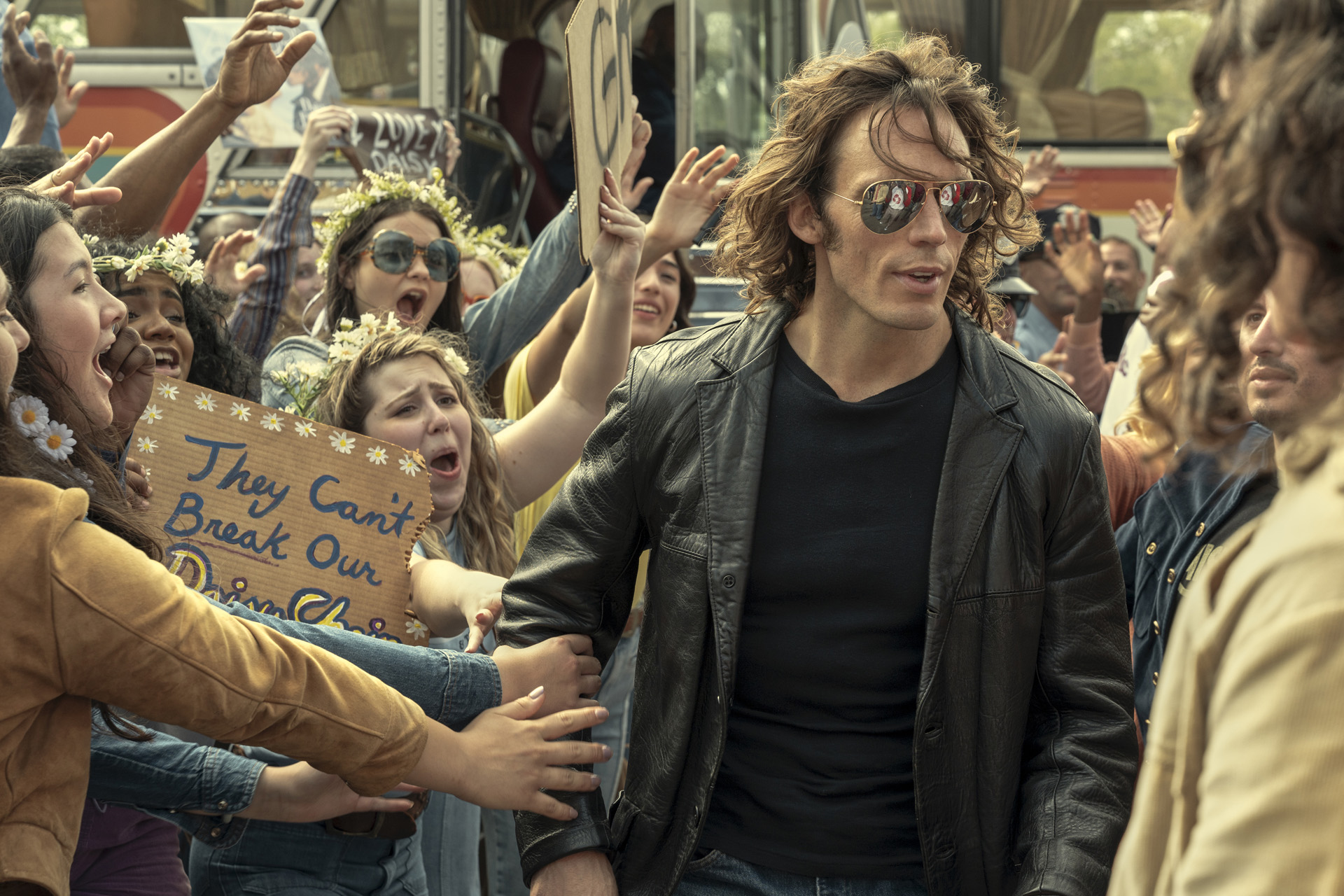
Sam Claflin as Billy Dunne
What about the boys – what was it like to dress Billy?
Unfortunately, Billy has the most the most boring clothes. I was constantly apologising to Sam [Claflin], like: ‘Here’s a T-shirt, here’s a denim shirt.’ He just wasn’t flamboyant. Early Bruce Springsteen was always on my boards. I think Sam felt the same way about his character, that he was somebody that will always stick to his blue collar roots and never really change, and that’s exactly how Bruce Springsteen is. He hasn’t changed at all, just new leather jackets and new boots. There were a few Keith Richards images I pulled, a lot of Rolling Stones and Led Zeppelin.
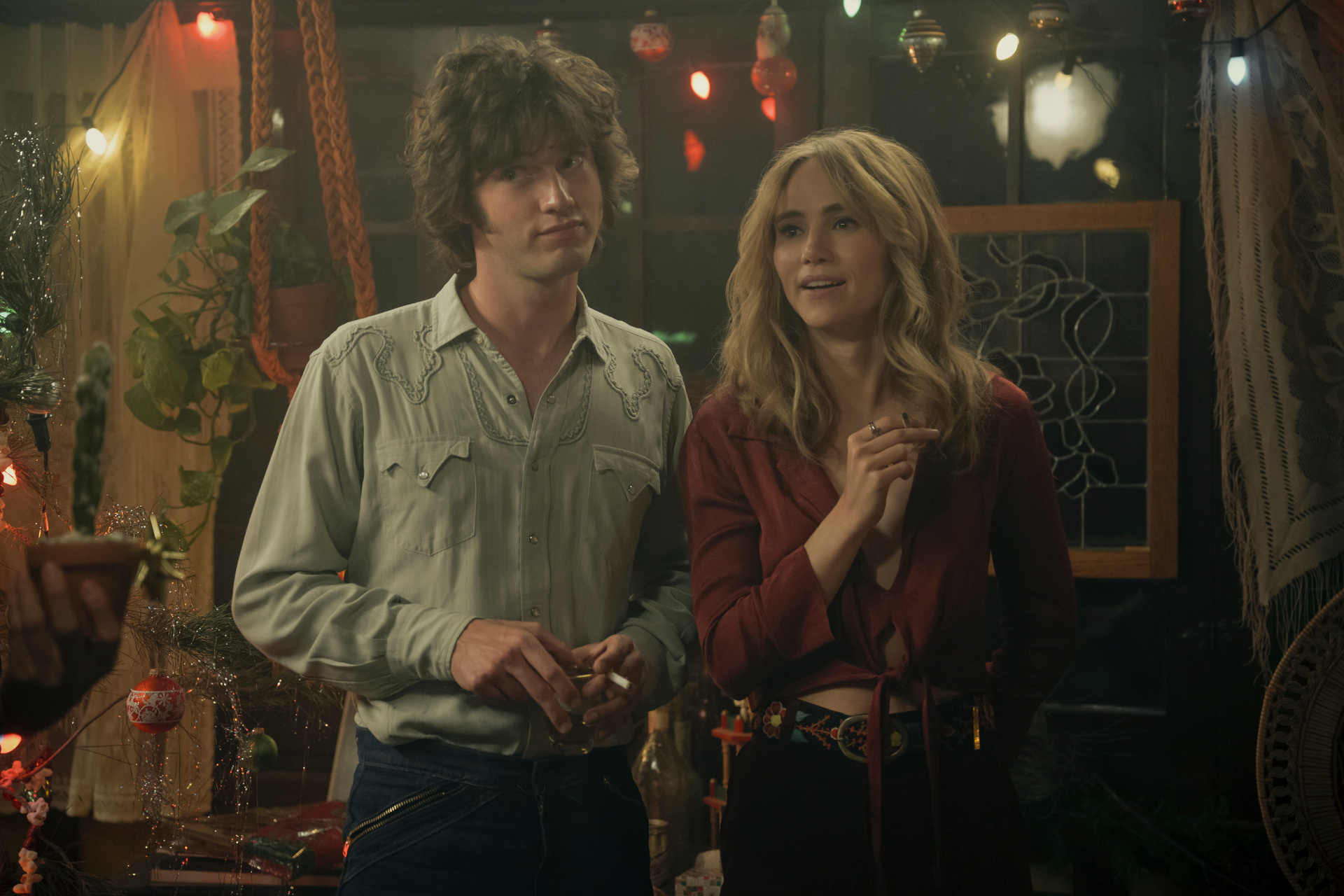
L to R: Will Harrison as Graham Dunne and Suki Waterhouse as Karen Sirko
And what about the other Dunne brother, Graham?
He was a little more like The Eagles. T-shirts, Western shirts, flared jeans. The Eagles were a huge band, but they very much denim-denim, T-shirts guys. Very unpretentious. A little bit of Jeff Lynne from ELO as well, I was feeling his vibe.
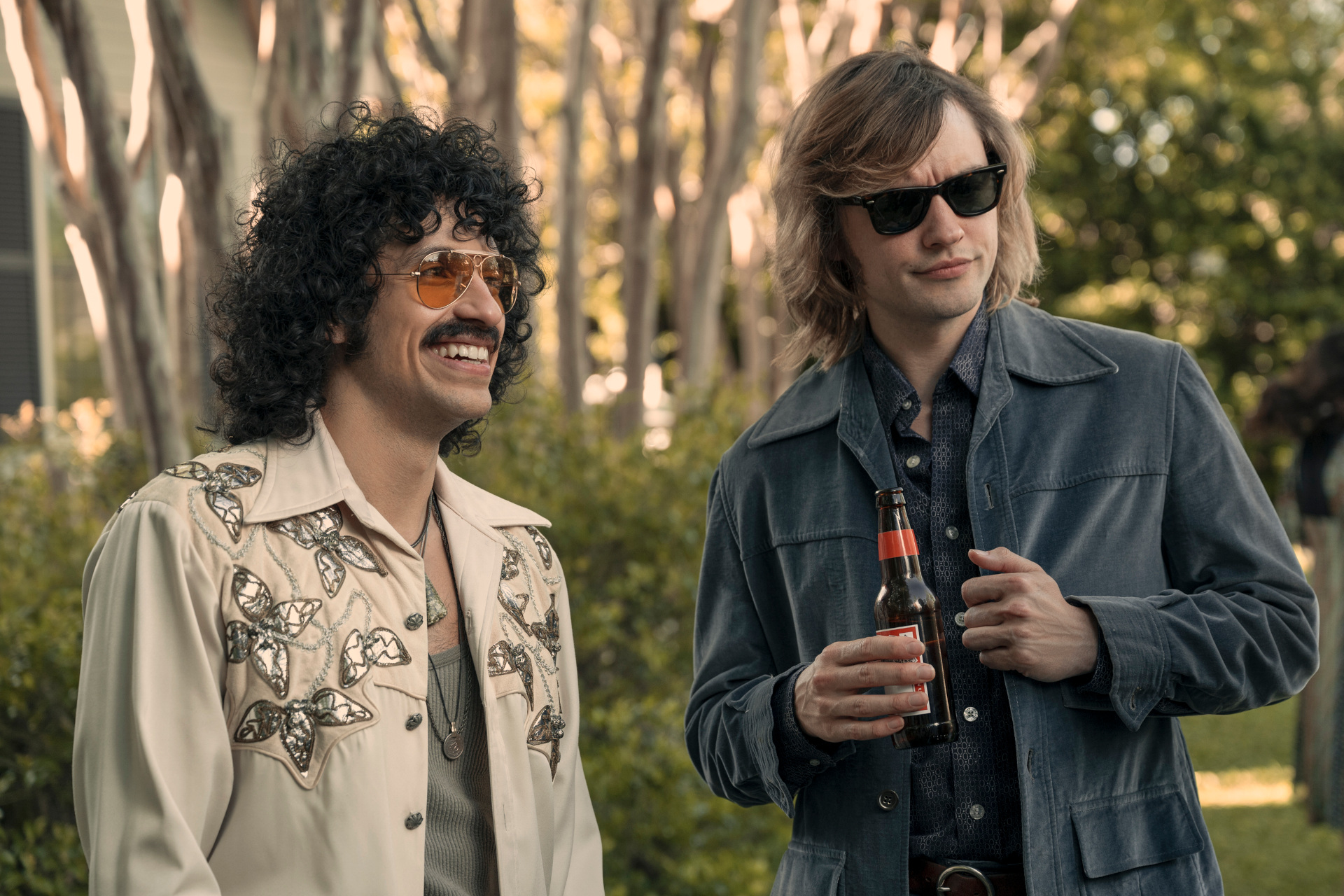
Sebastian Chacon as Warren Rojas and Josh Whitehouse as Eddie Roundtree
And then Eddie?
I really fell in love with The Last Waltz. Martin Scorsese directed it, and it’s about a band called The Band and it’s their very last concert. Robbie Robertson was the lead singer, and I became completely obsessed with him. I told Josh [Whitehouse], ‘You have to watch this documentary. This is who I think you should emulate, because he has great style.’ We also went for a little Peter Frampton, a bit of Jimmy Page. I felt like even though he’s not British in the show, I had to use a lot of those British looks from the rock stars back then. And he carried it off.
What was it like seeing everyone come together?
Everybody kind of morphed into their character really well, and I didn’t feel like there was any overlap. Everyone felt very individual to me, but like they belonged together. Cohesive, but individualised. By that time they’d also spent so much time together, they were a total band.
How did you source the wardrobe? Was it a mix of new and vintage pieces?
It was a mix of everything. I had so many changes, so many extras and so many day players. I just needed to amass a bunch of stuff. We have amazing costume houses in Los Angeles, so I pulled from all of those – but unfortunately, there were like four other 70s movies happening in LA at the same time. People were literally fighting over things; it was crazy. You couldn’t find a pair of men’s 70s boots to save your life. Every weekend for a year, Saturday and Sunday, I would go to the flea markets. I knew all the vintage stores, and they would always call me if they got something new in. I would go home at night and get online, I’d go to Etsy, Poshmark, eBay. There are so many online vintage shops now. But it was like finding a needle in a haystack because I was curating it. For every hundred things I looked at I would find one I liked. I did this until I found the perfect pieces. We had all the extras as well which made it a lot!
If I found contemporary stuff, I was happy to use it. Free People actually have a capsule collection from the show, but they were really great because they have that sort of vibe anyway. Levi’s was also great, they sent a lot of stuff. They actually hooked us up with this woman who, under the name of Love Melody, designed stuff for rockstars in the 70s. I connected with her, and she told me she had designed two jumpsuits for Elvis Presley [Riley’s grandfather]. She ended up making two coats for Riley for the show. I thought it was so great to kind of do this full circle thing, and have a little bit of authentic history. It was really special.
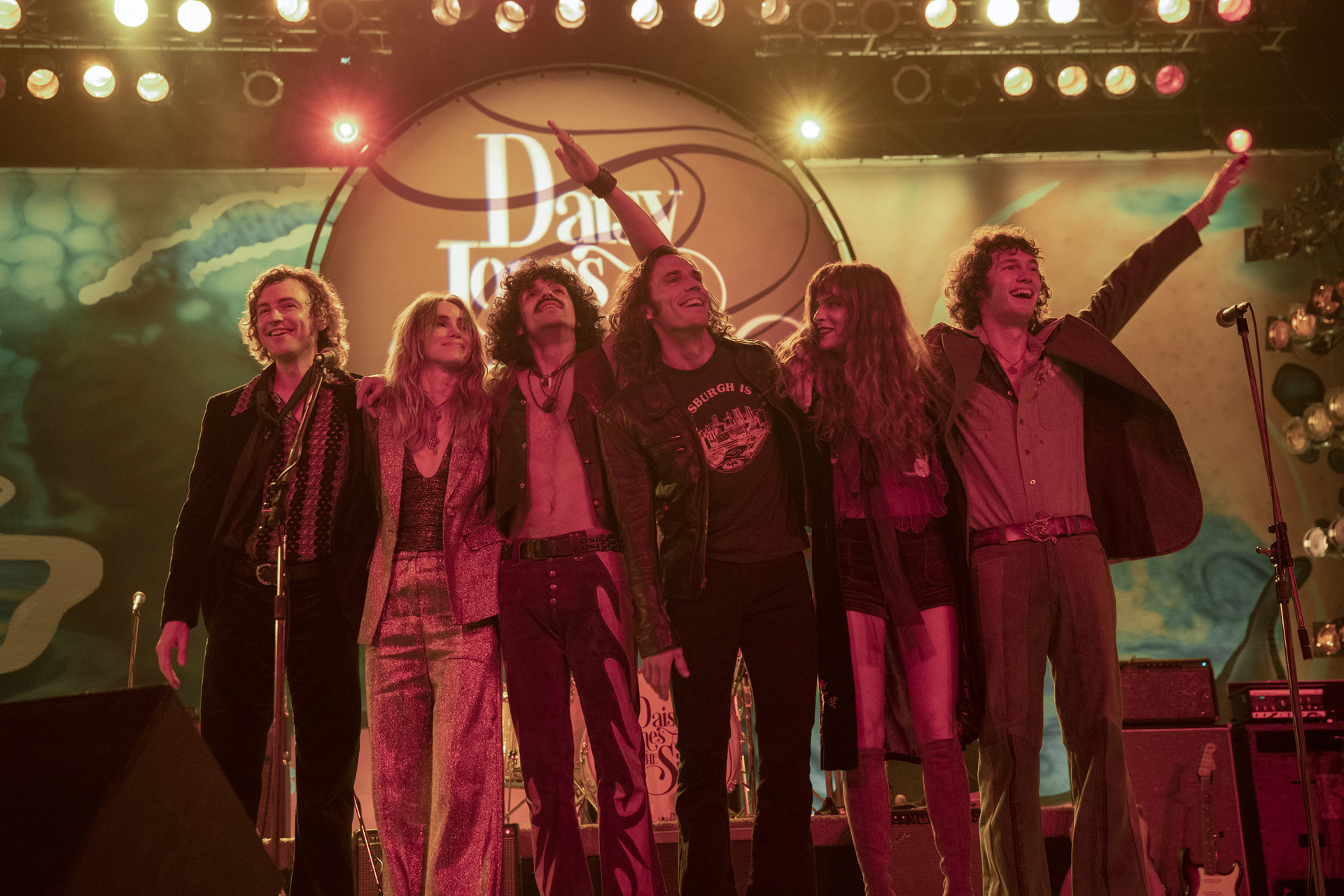
L to R: Josh Whitehouse as Eddie Roundtree, Suki Waterhouse as Karen Sirko, Sebastian Chacon at Warren Rojas, Sam Claflin as Billy Dunne, Riley Keough as Daisy Jones and Will Harrison as Graham Dunne
Were there any costumes that you had a lot of fun creating?
There was a two-piece leather outfit that Rosa made for Nabiyah. I’d seen it on Chaka Khan, all feathers, beads and fringe, and it’s this crazy outfit. I was like, ‘That’s outrageous, we need to do this.’ We were making stuff all the time, and it was so much fun. Every time one of the cast came in for a fitting, I’d have racks of new stuff.
What were the main goals you had in mind when creating the wardrobe for Daisy Jones & The Six?
The only goal I had was to make it look realistic. I just didn’t want it to look like a costume party show. I didn’t want it to be garish, I didn’t want it to be loud. I didn’t want to see a load of bad polyester. I just wanted it to look like a documentary. That’s why all of my research was documentaries and real footage, and not anything too outrageous. I think that’s why I got the job, I did a whole visual representation of the book in pictures and I presented it. That was my interview. I had never worked with Amazon or Hello Sunshine, but our vision aligned. It was the same show.
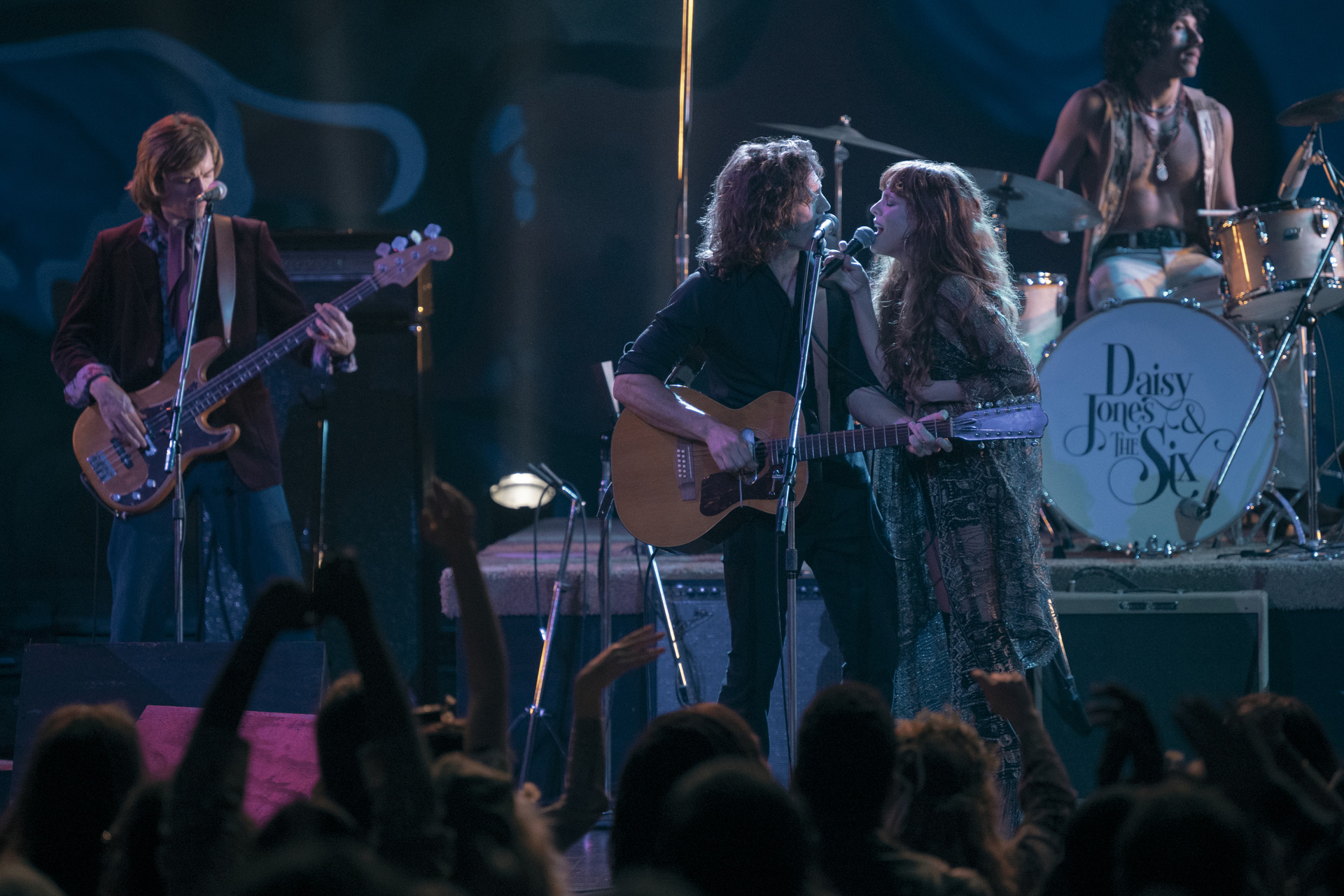
L to R: Josh Whitehouse as Eddie Roundtree, Sam Claflin as Billy Dunne, Riley Keough as Daisy Jones and Sebastian Chacon at Warren Rojas
QUICK FIRE
Who is your ultimate style hero?
I do love Bianca Jagger. She was just really cool. Always looked cool no matter she wore. I felt the same way about Ali McGraw.
If you could create a time capsule wardrobe from any era, which one would you choose?
Well, it wouldn’t be the 90s. I would say the 30s or the 70s. I used a lot of period clothes from the 20s and 30s in the show, because in the 70s people were wearing vintage and it came from those eras.
Is there a person – real or fictional – that you’d sell your soul to design a costume for?
David Bowie. Whatever it was, he’d probably wear it. I loved him, he was cutting edge. Really out there with music and art, he was a full-on risk taker.
Outside of costume design, what can we find you doing?
Looking for the next job, maybe? I really like doing period stuff. I don’t think I’d be good at science fiction. I like looking back rather than forward, and I love doing all the research behind it. I like digging deep and uncovering things.
WATCH
Daisy Jones & The Six is available on Prime Video now. amazon.co.uk
All images courtesy of Prime Video.

